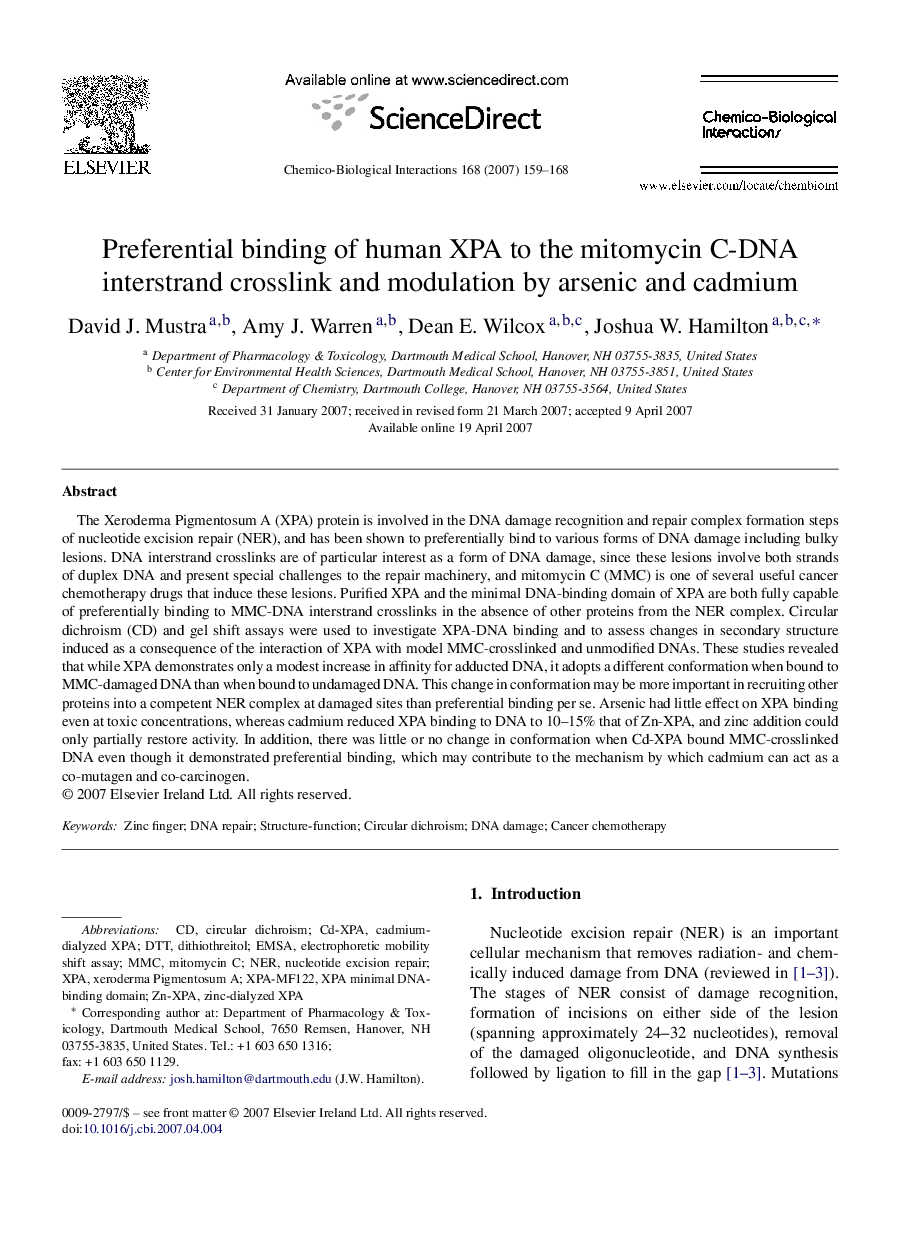| Article ID | Journal | Published Year | Pages | File Type |
|---|---|---|---|---|
| 2582089 | Chemico-Biological Interactions | 2007 | 10 Pages |
The Xeroderma Pigmentosum A (XPA) protein is involved in the DNA damage recognition and repair complex formation steps of nucleotide excision repair (NER), and has been shown to preferentially bind to various forms of DNA damage including bulky lesions. DNA interstrand crosslinks are of particular interest as a form of DNA damage, since these lesions involve both strands of duplex DNA and present special challenges to the repair machinery, and mitomycin C (MMC) is one of several useful cancer chemotherapy drugs that induce these lesions. Purified XPA and the minimal DNA-binding domain of XPA are both fully capable of preferentially binding to MMC-DNA interstrand crosslinks in the absence of other proteins from the NER complex. Circular dichroism (CD) and gel shift assays were used to investigate XPA-DNA binding and to assess changes in secondary structure induced as a consequence of the interaction of XPA with model MMC-crosslinked and unmodified DNAs. These studies revealed that while XPA demonstrates only a modest increase in affinity for adducted DNA, it adopts a different conformation when bound to MMC-damaged DNA than when bound to undamaged DNA. This change in conformation may be more important in recruiting other proteins into a competent NER complex at damaged sites than preferential binding per se. Arsenic had little effect on XPA binding even at toxic concentrations, whereas cadmium reduced XPA binding to DNA to 10–15% that of Zn-XPA, and zinc addition could only partially restore activity. In addition, there was little or no change in conformation when Cd-XPA bound MMC-crosslinked DNA even though it demonstrated preferential binding, which may contribute to the mechanism by which cadmium can act as a co-mutagen and co-carcinogen.
